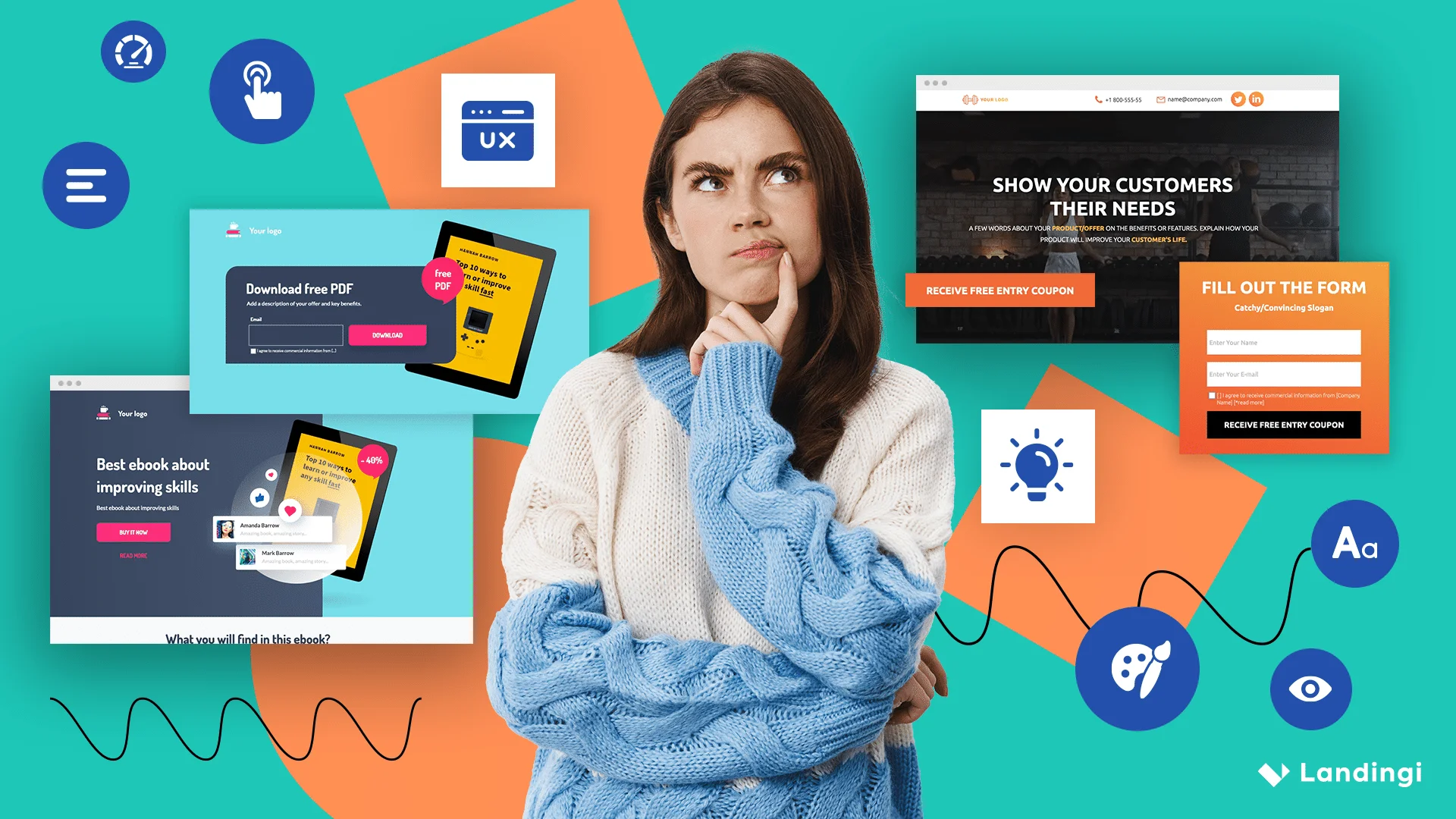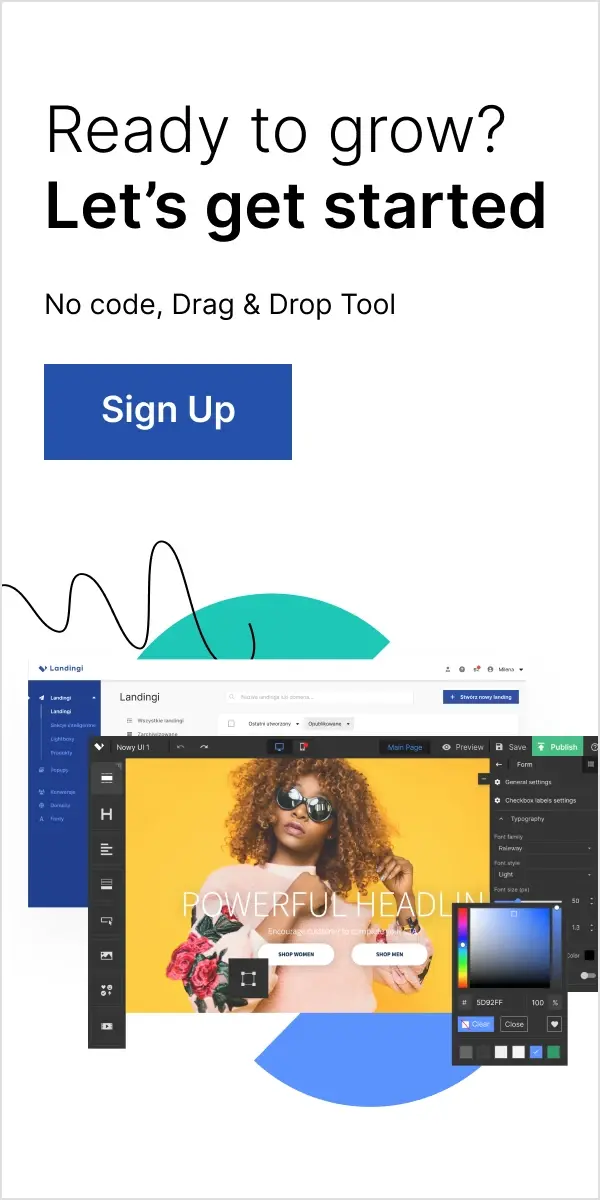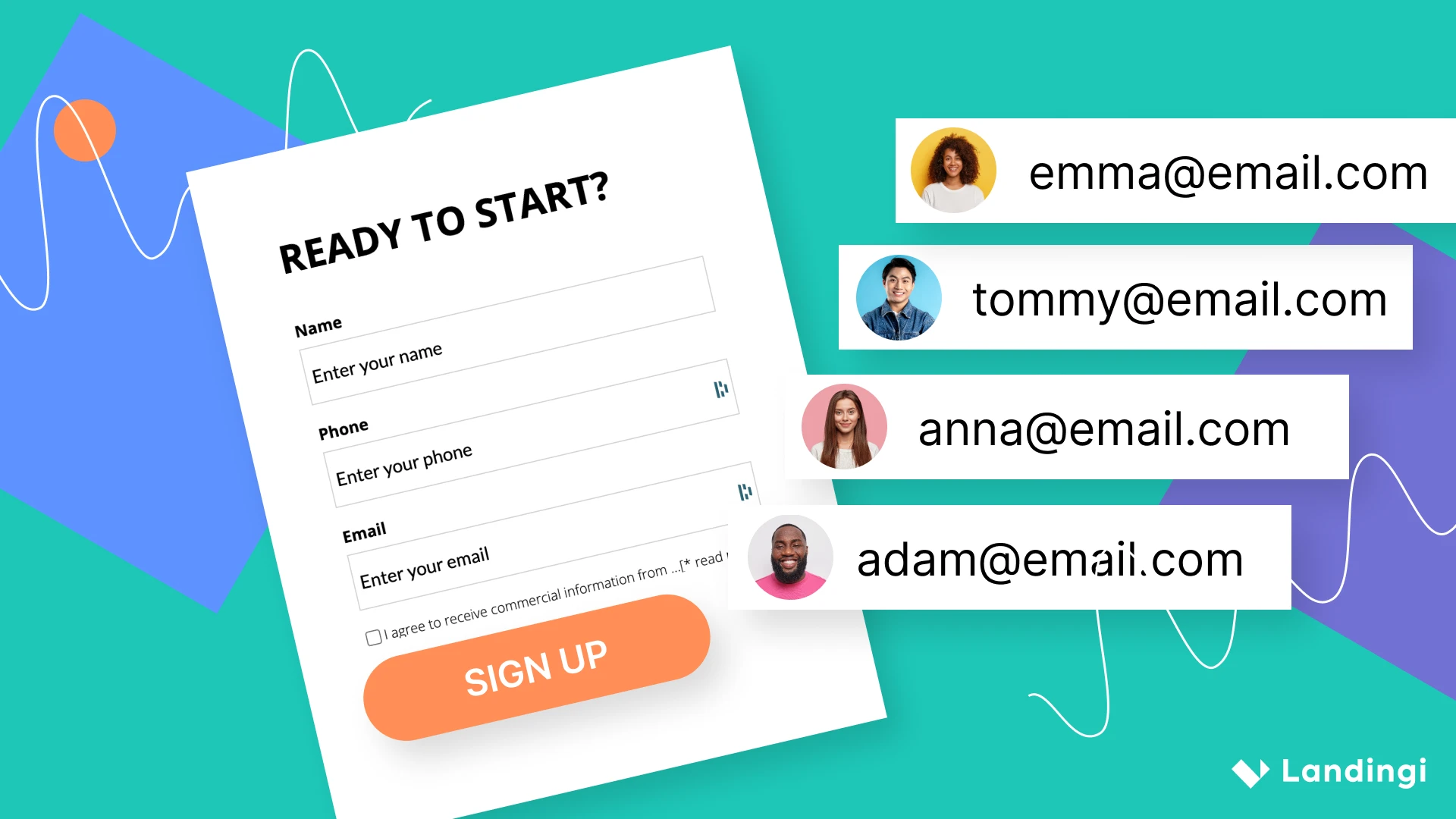Struggling to transform website visitors into loyal customers? The secret to boosting those numbers lies in UX conversion optimization. By refining your website’s user experience, you can increase the likelihood of visitors taking the actions you desire. Investing in good User Interface (UI) and User Experience (UX) design can significantly impact conversion rates. According to statistics reported by Mike Gualtieri from Forrester, a well-designed UI can boost a website’s conversion rate by up to 200%. But that’s not all, an enhanced UX design can take this a step further, potentially increasing conversion rates by up to a staggering 400%.
This article cuts through the noise and offers 10 best practices to optimize your UX and lift your conversion rates. It also highlights the benefits of UX conversion rate optimization (CRO), such as reducing acquisition costs and decreasing bounce rates.
Ready for a deep dive into conversion optimization? Let’s get started!
Make your sections smartable and let go of mundane manual tasks with Smart Sections! An easy way to manage bulk changes.
What is UX Conversion Optimization?
UX Conversion Optimization is a process of enhancing a website’s user experience (UX) with the goal of increasing the likelihood of visitors engaging in desired actions, such as completing a purchase, downloading an ebook, or signing up for an event. It’s about leveraging user data, conducting usability testing, and implementing changes that improve the user journey and increase conversion rates.
A crucial part of this process is the design of the website. According to Trevin Shirey’s “Why User Experience Matters to Marketing” (WebFX), an impressive 94% of first impressions of a brand’s website are related to its design. Moreover, 75% of website credibility comes from design! These statistics underscore the significance of good design in establishing positive initial interactions with users, and its role in influencing their decision to engage further with the brand.
If you’ve ever been curious about why certain websites excel at persuading users to make purchases or subscribe to their newsletters, the secret lies in UX CRO. The improvement of user experience hinges on comprehending their journey, pinpointing pain points, and making decisions based on data.
UX conversion optimization involves a wide range of strategies, from adjusting the UI design to segmenting your audience.
This comprehensive approach ensures that every aspect of the user’s interaction with your website is optimized for the best possible experience and outcome.
10 UX Conversion Rate Optimization Tips
Here are 10 actionable tips to help you enhance your website’s user experience and boost conversions. These best practices range from analyzing your conversion funnel to running user experience tests, each offering a unique way to improve your website’s CR.
Remember, UX CRO is not a one-size-fits-all approach. It involves understanding your specific audience, their behaviors, and their preferences, and tailoring your user interface design accordingly. UX designers who specialize in CRO, perform better user behavior research, which allows them to create a more personalized and effective user experience.
So, let’s explore these strategies in more detail and see how they can be tailored to your unique business needs and help you increase your UX conversion rate.
1. Analyze Your Conversion Funnel and Find Mistakes
We begin with the basics – comprehending your conversion funnel. It’s a framework that delineates the various stages a user traverses, starting from the initial awareness of a product or service to the eventual conversion. By analyzing your marketing funnel, you can identify potential barriers hindering users from completing a conversion, thus providing you with insights on where to focus your UX CRO efforts.
Conducting a thorough analysis entails the following:
- Identifying the various stages of the funnel
- Mapping out the user journey
- Measuring pertinent metrics
- Pinpointing areas for enhancement
Tools like Google Analytics 4, Hotjar, and ClickFunnels can provide valuable insights into user behavior and facilitate data-driven decision-making for funnel optimization. Also, Landingi, a landing page builder, includes a built-in analytics tool called EventTracker for microconversion tracking.
2. Define Goals for Conversion Rate
Setting conversion rate goals is a crucial part of conversion rate optimization. These goals can be specific and varied according to the needs of your business. For instance, you might set goals such as:
- Increasing the percentage of website visitors who make a purchase by 15% over the next quarter.
- Boosting the number of sign-ups for your newsletter by 20% within the next two months.
- Raising the number of downloads for your free ebook by 30% over the next six weeks.
- Enhancing the number of attendees for your online webinar by 25% for the next event.
- Increasing the conversion rate of visitors to users of your app by 10% in the next two months.
These goals are defined by examining user behavior, conducting user experience tests, and setting up methods for collecting and analyzing user feedback. It’s essential to align these goals with your overall business objectives and establish crucial UX metrics that correlate with your campaign objectives. By setting specific, measurable goals and using analytics to monitor progress, you can set realistic and attainable conversion rate targets.
3. Collect, Segment, and Analyze Visitor Data
The collection, segmentation, and analysis of visitor data are fundamental parts of UX CRO. This process, coupled with user research, provides a wealth of insights into user behaviors and preferences. These invaluable insights guide your optimization strategies, facilitating data-driven decision-making to improve user experience and boost conversion rates.
By understanding who your visitors are, their behaviors, and their preferences, you can tailor your website design to meet their needs and desires.
This personalized approach not only enhances the user experience but also increases the likelihood of conversion. For example, if your data shows that a significant portion of your visitors are interested in a specific product category, you can highlight this category on your homepage to make it easier for these visitors to find what they’re looking for.
4. Create a Compelling and Clear Value Proposition
In UX CRO, a persuasive value proposition is indispensable. It involves articulating your business value and credibility, addressing customer pain points, and clearly outlining the benefits of your offer. A strong value proposition communicates why buyers should choose your product or service over your competitors’.
A compelling value proposition should be clear, concise, attention-grabbing, and mobile-optimized. It effectively summarizes the benefits and value of the product or service for the target audience. A clear value proposition can aid visitors in comprehending the distinct advantages of a product or service and distinguishing it from competitors. This reduces uncertainty, builds credibility, and enhances the effectiveness of the unique selling offer, all while being easy to understand and navigate on a mobile device.
5. Use Conversion Copywriting and Create Enticing CTAs
Effective copywriting can be the determinant between a user who leaves and one who converts. Conversion copywriting refers to the use of:
- voice-of-customer data
- frameworks
- formulas
- proven persuasion techniques
to compel the reader to take action, all it takes is just a few clicks.
Creating a compelling CTA is just as critical. A good call-to-action button:
- Starts with a strong verb to guide users
- Evokes enthusiasm or emotion to make the experience more engaging
- Provides a clear benefit to show users what they gain from taking action
- Uses eye-catching colors for the button to ensure it stands out and is easy to find
Without effective CTAs, visitors might leave the site without engaging further, leading to lost conversion opportunities. In the realm of UX, CTAs serve as important signposts that guide users through the website and towards conversion, making their journey smoother and more enjoyable.
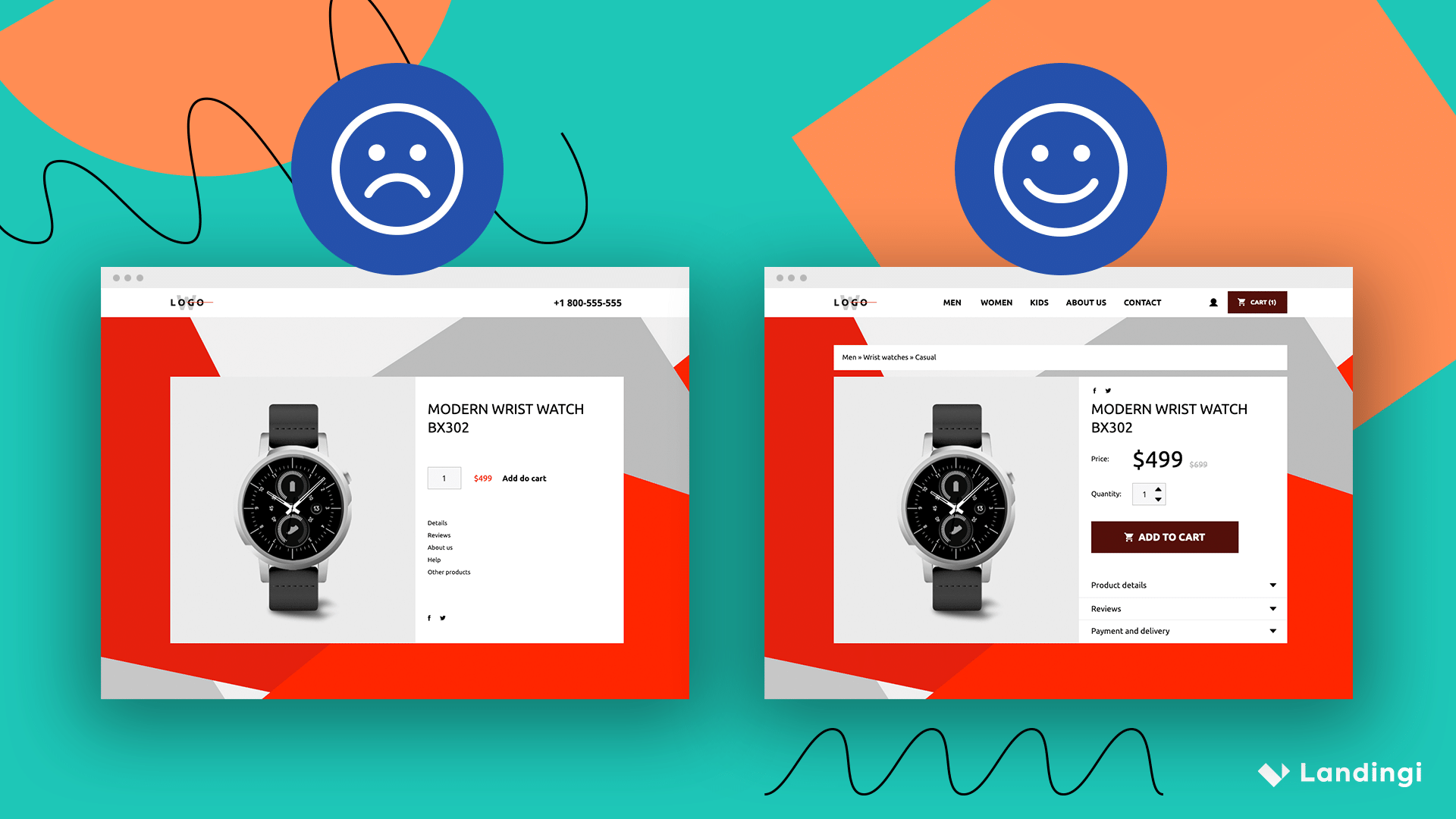
6. Provide Various Forms of Social Proof
Social proof acts as a powerful tool in establishing trust, credibility, and validation among potential customers. Often, it proves to be more effective than self-promotion, as it relies on the experiences and opinions of real users to influence potential customers.
When visitors see that others have had positive experiences with a product or service, they are more likely to trust in its value and make a purchase.
Genuine customer reviews are a potent form of social proof and a key determinant in achieving customer satisfaction.
Gathering these reviews can be done by analyzing existing customer reviews and service tickets. Utilizing review tools can also facilitate user feedback, making it easier for customers to share their experiences. When these reviews are showcased on your website, it can enhance conversion rates by offering a clear and specific call to action that aligns with the content of advertisements. This, in turn, generates opportunities for lead conversion, ultimately driving your business’s success.
Presenting these reviews in a user-friendly and easily navigable format can significantly enhance the user experience. This can be achieved by incorporating features such as filter options, star ratings, and review highlights. By doing so, you are not only providing valuable social proof but also improving the overall user experience, making it simpler and more enjoyable for users to engage with your website and ultimately convert.
7. Perform Competitor Analysis
Carrying out competitor analysis is a vital component of UX CRO. It involves assessing the websites of your main competitors to pinpoint areas for optimizing your own site in order to attract and engage potential customers.
This process of analysis can be broken down into several key steps. First, you need to identify who your main competitors are. This could be companies who offer similar products or services, or who target the same audience as you. Once you have a list of competitors, you can start to analyze their websites.
Look at the design of their site, the user experience they offer, the content they provide, and the way they engage with their audience.
What are they doing well? What could they improve on? These insights can provide you with valuable ideas for improving your own website.
Another important aspect of competitor analysis is understanding their SEO strategy. What keywords are they targeting? How well are they ranking for these keywords? This information can help you to refine your own SEO strategy and improve your visibility in search engine results.
Depending on the competitiveness of your industry, you may want to use paid tools for this analysis. However, even without these tools, you can still conduct a thorough competitor analysis by identifying your top competitors through search results and then evaluating their websites.
Tools like Backlink Checker from Small SEO Tools, SEMrush, SpyFu, UserTesting, and Outgrow can aid in conducting competitor analysis for UX conversion rate optimization. These tools provide insights into your competitors’ backlink profiles, keyword rankings, user experience, and more, enabling you to make data-driven decisions about your own UX CRO strategy.
8. Run User Experience Tests
Executing user experience and user interface tests is another crucial element of UX conversion rate optimization. These tests provide valuable insights into the user experience and interface, aiding in enhancing website performance.
A/B testing is one of the most common forms of user experience testing. It involves creating two versions of a webpage, each with a different element, and then tracking which version performs better. This method is particularly effective in determining which design, headline, or feature resonates more with your audience, thereby providing an opportunity to perfect your website’s elements based on real user feedback.
Usability testing is another important form of user experience testing. It involves observing users’ interactions with the user interface, collecting feedback on their experience, and analyzing the results to identify usability issues and optimize the user experience. This can be done through various methods such as one-on-one sessions, remote user testing, or using software that records user interactions.
The insights derived from these tests can help you uncover hidden issues that may be hindering the user experience, allowing you to make necessary adjustments to improve the overall user journey.
In addition to these, there are other types of testing that can be used to optimize the user experience. For instance, multivariate testing, which is similar to A/B testing but involves testing multiple variables at once, can provide a more holistic view of how different elements interact and affect user behavior. Eye-tracking studies can also provide valuable insights into how users navigate your site and where their attention is drawn, allowing you to optimize your layout and design for maximum impact.
By continually testing and refining your website based on user feedback and behavior, you can create a more engaging, intuitive, and satisfying experience for your users, leading to better business outcomes.
9. Use a Dedicated Landing Page for Ads
An additional suggestion to boost UX CRO is employing a dedicated landing page for ads. These landing pages are specifically designed and optimized to convert visitors into customers for a marketing campaign.
A dedicated landing page can improve UX conversion rates by offering a clear and specific call to action that aligns with the content of advertisements, thereby generating opportunities for lead conversion. Creating visually appealing and user-friendly landing pages that align perfectly with your brand aesthetics and campaign goals is especially easy with a professional, pixel-perfect landing page builder.
By segmenting your audience based on demographics, behaviors, or interests, and customizing the messaging, visuals, and offers on each landing page to resonate with the specific segment, you can greatly enhance your UX optimization efforts. A platform dedicated to landing pages simplifies this process by providing easy-to-use design tools and customizable templates, allowing you to create effective websites without the need for extensive coding or design skills.
10. Ensure Your Website is Accessible
Finally, it’s paramount to ensure that your website is accessible to all visitors, including those with disabilities, as a core part of your UX design strategy. A website that is inaccessible to a portion of your audience can significantly affect organic traffic and conversion rates.
To enhance the accessibility of your website, it’s important to follow the fundamental principles of web accessibility, such as:
- Providing sufficient contrast between colors and textures
- Limiting and organizing content
- Using descriptive alt text for images
- Including transcripts or captions for audio and video content
- Ensuring compatibility with screen readers and other assistive technologies.
For users with hearing impairments, providing transcripts for all audio content, such as videos and podcasts, can greatly improve accessibility. These UX design considerations not only ensure inclusivity but also enhance the overall user experience, contributing positively to your conversion results.
How Do You Measure Success of UX CRO Changes?
To measure success of UX CRO changes, it’s essential to keep a close eye on key performance indicators (KPIs) such as conversion rates, bounce rates, and average time on page. You should consider the following key metrics and methods:
- Conversion Rate (CR): This is a key metric that calculates the percentage of visitors who complete a desired action on your website, such as making a purchase or filling out a form.
- User Engagement Metrics: These can include metrics like page views, session duration, and interactions per visit.
- User Feedback: This can be collected through surveys, interviews, and user testing sessions.
- A/B Testing: This involves comparing two versions of a webpage to see which performs better.
- Heatmaps and Click Tracking: These tools can provide insights into how users interact with your website.
- Goal Completion Rate: This measures how often users complete specific tasks on your website.
- Revenue Per Visitor (RPV): This metric can help you understand the financial impact of your UX improvements.
- Customer Retention and Loyalty: Metrics like churn rate and customer lifetime value can indicate how your UX improvements are impacting customer loyalty.
- Load Time and Performance Metrics: These can help you understand how website performance impacts user experience.
- Accessibility Improvements: Assessing improvements in website accessibility can help ensure your site is user-friendly for all visitors.
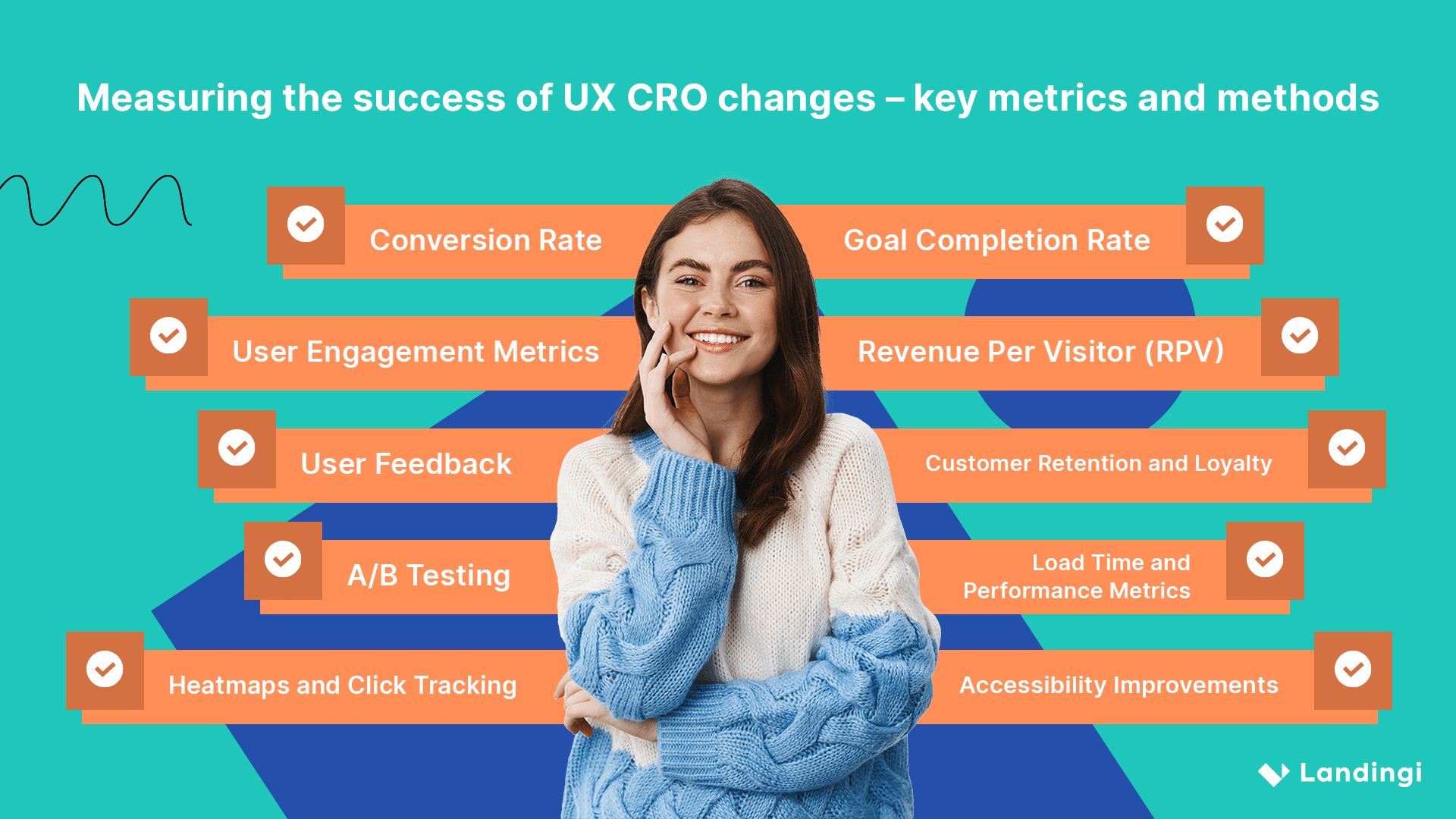
By monitoring these KPIs and metrics, you can gain a more comprehensive understanding of how your users are interacting with your website and where there may be room for improvement. For instance, a rise in conversion rate subsequent to the implementation of UX CRO changes signifies a positive influence on user experience, leading to increased engagement in desired actions by visitors.
On the other hand, a high bounce rate may imply that users are not encountering the anticipated information or experience, resulting in a subpar user experience.
6 Key Benefits of UX Conversion Rate Optimization
Investing in UX CRO is beneficial as it can increase conversions, reduce acquisition costs, enhance user experience, and foster customer retention. It also decreases bounce rates by improving website navigation, enables swift testing of new marketing concepts, enhances user satisfaction, indirectly improves search engine rankings, and establishes a more competitive online presence.
A poorly optimized user experience can result in a loss of 89% of potential customers to competitors, which is far from desirable (“Why User Experience Matters to Marketing”, Trevin Shirey).
Below, you can see UX CRO advantages described in detail.
Increased Conversions
One of the primary benefits of UX CRO is the potential for increased conversions. By optimizing the user experience on your website, you can significantly increase the likelihood of visitors taking desired actions, such as making a purchase or signing up for a newsletter.
Reduced Acquisition Costs
Another advantage of UX CRO is the potential for reduced acquisition costs. By improving the user experience, you can increase the conversion rate, which means you need less traffic to achieve the same number of conversions. This can significantly lower your acquisition costs.
Enhanced User Experience
UX CRO is all about improving the user experience. By making your website more user-friendly, you can enhance the overall experience for your visitors, which can lead to increased satisfaction and loyalty.
Higher Customer Retention
By improving the user experience, you can also increase customer retention. A good user experience can foster loyalty among your users, boosting the likelihood that they will return to your website in the future.
Decreased Bounce Rates
A well-optimized user experience can also lead to decreased bounce rates. By making your website more intuitive and easier to navigate, you can reduce the number of users who leave your site without taking any action.
Swift Testing of New Marketing Concepts
Finally, UX CRO allows for the swift testing of new marketing concepts. By continuously optimizing and testing different elements of your user experience, you can quickly determine what works and what doesn’t, allowing you to adapt and improve your marketing strategies more efficiently.
Get 111 Landing Page Examples—The Ultimate Guide for FREE
What to Avoid In UX CRO?
In UX CRO, you should avoid the following 4 pitfalls:
- Prioritizing Aesthetics Over Functionality: While having a visually appealing website is important, it should never come at the cost of functionality. A website that looks great but is difficult to navigate or lacks essential features can frustrate users and drive them away. It’s essential to strike a balance between aesthetics and functionality to ensure a smooth and enjoyable user experience.
- Neglecting Mobile Optimization: With the ever-increasing number of mobile users, failing to optimize your website for mobile devices can significantly hamper your conversion rates. A mobile-optimized website ensures that users can easily navigate and interact with your site on their smartphones or tablets, thereby increasing the chances of conversion. In fact, Trevin Shirey’s article revealed that 52% of users said a bad mobile experience made them less likely to engage with a company, underscoring the importance of responsive and mobile-friendly design.
- Overlooking Personalization: Personalization is key to enhancing user experience. By tailoring the user experience to individual preferences and behavior, you can make users feel valued and understood, thereby increasing their engagement and likelihood to convert. Ignoring personalization can result in a generic user experience that fails to resonate with your audience, hindering your UX CRO efforts.
- Failing to Address Usability Issues: Usability issues, such as complex navigation, slow load times, or unclear information, can frustrate users and cause them to leave your website without converting. It’s essential to regularly test your website for usability issues and address them promptly to ensure a seamless user experience and maximize your conversion rates.
How to Choose UX CRO Expert?
When contemplating choosing and hiring a UX CRO expert to fine-tune your website, give thought to factors like experience, industry acumen, communication prowess, and a data-centric optimization approach.
A UX CRO expert should also demonstrate effective communication skills, as they will need to articulate their findings and insights to stakeholders in a clear and concise manner. Additionally, a data-driven approach can enhance UX CRO expertise by leveraging data analysis from page analytics, heat maps, and user surveys to pinpoint areas for enhancement and evaluate the effectiveness of optimization endeavors.
For more information on this topic, check out our list of best CRO experts.
Conclusion
To wrap up, conversion rate optimization UX is integral for refining user experience and enhancing successful actions. By implementing the tips discussed in this blog post, businesses can not only improve their website’s user experience but also significantly increase their conversion results. Avoiding common pitfalls and focusing on user needs can further enhance the success of your UX CRO efforts. By understanding user behavior, conducting thorough research, and making data-driven decisions, businesses can enhance user satisfaction, boost conversion rates, and grow their online presence.
Additionally, utilizing dedicated landing pages plays a crucial role in providing a consistent user experience, key to driving conversions. These pages align with the advertising campaign, creating a seamless journey from the ad to conversion. This builds trust and removes distractions, focusing the visitor on the offer, thereby boosting conversion rates. To make this process even more streamlined, consider using Landingi, a user-friendly platform for creating high-converting landing pages.

